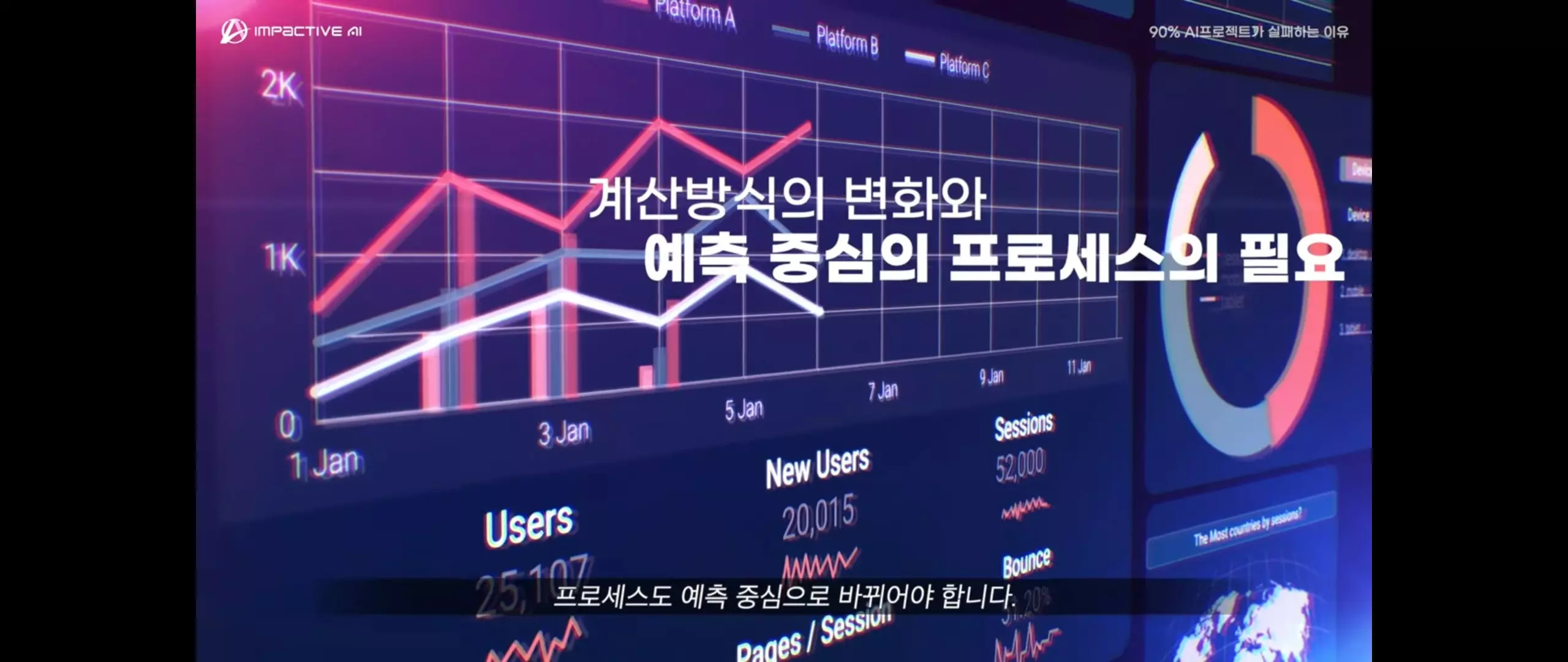Retail Industry Cannibalization Effect: Overcoming with AI

The Hidden Risk in the Retail Industry: What is the Cannibalization Effect?
The cannibalization effect refers to a phenomenon where new products or promotions launched by a company take sales away from their existing products instead. For example, when a convenience store launches a new cup noodle, sales of existing cup noodles decrease, which is a typical case. In the retail industry, this cannibalization effect has become a major cause of increased costs without sales growth.
Traditionally, retailers have tried to solve this problem relying on experience and intuition. However, with recent advances in AI technology, it is now possible to accurately predict and manage cannibalization effects based on data. Let's examine how AI is solving this problem through success cases of global retail companies.
If you're curious about the impact of hidden cannibalization effects on the retail industry, we recommend reading [The Cannibalization Effect the Retail Industry Didn't Know About and AI Solutions] first.
Walmart's AI-Based Cannibalization Effect Management Strategy
Real-Time Inter-Product Impact Analysis
Walmart uses AI to analyze in real-time the impact of new product launches or promotions on existing products. This system particularly shines during major events like Black Friday or holiday seasons. For example, they can immediately identify how significant discounts on specific electronics affect sales of other similar products and dynamically adjust inventory allocation.
Key Insights for Practitioners
What's noteworthy about Walmart's case is that the AI system doesn't simply track sales volume changes but analyzes the causes of those changes. This enables a differentiated approach that minimizes unintended cannibalization effects while actively utilizing strategic product substitution that helps expand overall sales.
Amazon and Target's Demand Forecasting AI Solutions for Cannibalization Effects
Amazon's Real-Time Analysis of 400 Million Products
Amazon uses AI to predict daily demand for over 400 million products while simultaneously monitoring inter-product cannibalization effects. Their system comprehensively analyzes competitor prices, market trends, and customer behavior patterns to predict which products will take sales from which products.
The core of Amazon's AI is that it continuously improves accuracy by learning from past prediction errors. When sales of specific products surge, the system distinguishes whether this is market expansion or demand migration from other products and adjusts inventory levels accordingly.
Target's Integrated Inventory Management System
Target analyzes cannibalization effects between offline stores and online platforms through the 'Inventory Ledger' system introduced in 2023. This system uses generalized additive mixed models to generate customized predictions suited to each sales category's characteristics.
Key Points for Practical Application
The lesson that Amazon and Target's cases give to small and medium retailers is that there's no need to build perfect systems from the start. Instead, it's effective to begin with core product groups and gradually expand AI analysis scope. Particularly, applying to seasonal products or frequently promoted categories first can yield quick results.
Levi's Regional Cannibalization Effect Analysis in the Fashion Industry
Levi's uses a unique approach that analyzes sales migration between products at the geographical segmentation level. They precisely track how new product launches affect existing product sales in specific regions to establish optimized product compositions by store and region-customized promotion strategies.
Practical Value of Regional Differentiation Strategies
The key discovery from Levi's case is that the same new product can have completely different cannibalization effects depending on the region. This means that the same new product can have completely different impacts on existing products in Seoul's Gangnam versus Busan's Haeundae. Such insights demonstrate the need for region-specific strategies, moving away from traditional approaches that applied uniform marketing nationwide.
Strategic Cannibalization Effect Utilization Case Analysis
Apple's Planned Product Replacement Strategy
Apple is a representative case of 'planned cannibalization effect.' While explicitly allowing new iPhones to replace sales of older models, they optimize this process through AI. Steve Jobs' philosophy that "if we don't replace our own products, someone else will" is supported by data.
Apple's AI predicts not only conversion rates from their own older models but also from competitor product users to measure overall market expansion effects.
Tencent's Innovative Service Expansion
Tencent intentionally absorbed users from their own QQ service through WeChat launch. They succeeded in significantly expanding their overall user base while continuously monitoring user migration between products through AI-based user behavior analysis.
Practical Guide for Strategic Utilization
The key lesson from these cases is that cannibalization effects are not necessarily targets to avoid. Rather, they can become tools strategically utilized for market preemption or competitor response. What's important is making such decisions based on data rather than intuition.
Food Manufacturer's SKU-Level Precision Analysis
The case of a US food manufacturer that collaborated with Quantzig demonstrates the precision of AI analysis. They discovered an interesting pattern where new low-sugar beverages unexpectedly replaced diet beverage line sales more than regular beverages.
Value of Discovering Unexpected Patterns
The key of this case is that AI discovered consumer behavior patterns different from intuition. It captured subtle preference changes through data that would be easily missed by traditional analysis methods. Such insights led to marketing spend readjustment and product positioning optimization.
AI Implementation Roadmap for Practitioners
Stage 1: Current Situation Diagnosis and Core Product Group Selection
Systematic analysis is needed to accurately identify current cannibalization effects. First, sales changes of existing products before and after new product launches or major promotions over the past 2-3 years should be analyzed. Particularly, measuring the sales volume reduction of existing products during 4-12 weeks after new product launches to quantify cannibalization levels is important.
Specific diagnostic indicators include cannibalization rate (proportion of new product sales moved from existing products) and net growth rate (actual increase in total category sales). For example, if new product sales are 10 billion won but existing product sales decreased by 7 billion won, cannibalization rate is 70% and net growth rate is 30%. Such quantification enables objective understanding of current situations.
When selecting product groups for analysis, multiple criteria should be comprehensively considered. It's effective to prioritize categories with high sales contribution (over 20% of total sales), frequent new product launches (over 3 times annually), many promotions (over twice monthly), and many similar products (over 20 SKUs). Practically, starting with categories like food and beverages or daily necessities that have high product substitutability and many consumer choices can yield quick results.
Stage 2: Data Infrastructure Construction
Since AI analysis accuracy is directly linked to data quality, systematic data infrastructure construction must precede. Sales data should accumulate daily, product-specific, and store-specific sales volumes and revenues for at least 2 years, and accurate analysis requires not just sales amounts but also quantity, unit price, and discount rate information. For inventory data, systems capable of real-time tracking of incoming, outgoing, and inventory levels are needed, particularly enabling analysis connecting new product arrival timing with existing product inventory changes.
Promotion data should record event types (discounts, giveaways, bundle sales), discount rates, periods, and target products in detail, and distinguishing between online and offline promotions is also important. Additionally, external environment data such as competitor pricing information, seasonal factors, and trend changes should be collected to accurately distinguish cannibalization effects from external factors.
For data accuracy, standards should be established and continuously managed for completeness (missing data under 5%), consistency (unified codes for same products), timeliness (daily data updated next morning), and accuracy (error rate under 1% through monthly verification). Practically, existing ERP and POS systems should be integrated while standardizing data formats, with this process expected to take 3-6 months and cost 200-500 million won for mid-sized companies.
Stage 3: Pilot Project Execution
Starting pilot projects in limited scope is safe to minimize enterprise-wide implementation risks. For large retailers, limiting to 10-20% of total stores or specific regions (metropolitan area, etc.) and restricting product categories to 1-2, while for mid-sized retailers, about 30% of total stores and 1 main category is appropriate. Pilot periods should be set for at least 6 months to sufficiently observe seasonal factors and promotion effects, particularly planning to include at least 2-3 new product launches considering new product launch cycles.
Clear indicator definitions are needed for objective pilot success evaluation. Quantitative indicators include cannibalization effect prediction accuracy (error within 15% between actual cannibalization rate and predicted values), inventory turnover improvement (over 10% improvement compared to existing), and net sales growth rate improvement (over 20% improvement in net growth rate during new product launches) as core indicators. Qualitative indicators such as practitioner AI system utilization, decision-making process improvement, and work efficiency enhancement should also be measured through monthly user satisfaction surveys and semi-annual in-depth interviews.
Preparation for commonly occurring problems during pilots is also necessary. For data quality issues, intensive data verification and cleansing work should be conducted during the initial 3 months, and for user resistance, sufficient education and incentive systems should be prepared. Prediction accuracy deficiency should be solved by continuously supplementing model training data and utilizing external expert consulting, while system integration errors should be addressed by forming dedicated IT teams and establishing 24-hour monitoring systems.
Stage 4: Gradual Expansion and Advancement
When pilot results are verified, a 3-stage expansion strategy should be executed. First expansion extends to remaining categories in pilot target regions, second expansion broadens scope to other regions, and third expansion implements enterprise-wide application while adding advanced functions. Having 3-6 month stabilization periods at each expansion stage to monitor system performance and make necessary adjustments is important, and stability should be secured through stage-by-stage learning and improvement rather than rapid expansion.
Organizational capability enhancement is essential for successful AI system establishment. AI literacy education should be provided to core practitioners, basic data analysis courses should be operated, and monthly excellent utilization case sharing meetings should be held to create organization-wide AI utilization culture. Additionally, forming dedicated organizations of 4-5 people consisting of 1 data scientist, 1 system administrator, and 2 business analysts to handle continuous system management and improvement is effective.
Continuous performance improvement is needed after system implementation. Monthly prediction accuracy should be monitored, models should be retrained according to seasonal characteristics or market changes, and analysis algorithms should be updated reflecting new product launch patterns or consumer behavior changes. Advanced functions such as real-time dashboard construction, mobile app integration, and automatic notification systems can be added gradually, with future considerations for linkage with other business areas like personalized marketing, supply chain optimization, and pricing strategy establishment. From an ROI perspective, investment recovery within 12-18 months after implementation should be targeted, with long-term expectations of 10-20% annual profitability improvement through sales increase and cost reduction.
Future Prospects and Response Strategies
AI utilization in the retail industry is evolving beyond simple cannibalization effect management toward overall business optimization. In the future, integrated AI solutions encompassing customer behavior prediction, supply chain optimization, and personalized marketing are expected to become standard.
For successful AI implementation, gradual application aligned with business objectives is more crucial than technical completeness. As shown in global leading companies' cases, AI can become a powerful tool that transforms the hidden risk of cannibalization effects into opportunities.


.svg)
%202.svg)
.svg)


.svg)
















.svg)